Introduction #
The authors create the Fiber Segmentation Dataset, a small dataset to segment fibers in CT scans of concrete. The created fibers dataset consists of only 3 spatially disjoint volumes of size 20 x 512 x 512 (d x h x w) voxels (voxel size: 4 µm). It was geometrically enlarged by combinations of rotation (using multiple angles), resizing, flipping, tilting, and squeezing using the AiSeg project.
Motivation
To optimize material usage in construction projects, carbon reinforced concrete presents a viable solution. However, the strategic placement of carbon elements becomes pivotal in this approach. To address this, the researchers employed a sophisticated micro-tomography instrument known as µ-CT. This apparatus comprises an X-ray source and a camera, which capture numerous projections while the object undergoes rotation. Subsequently, these projections are utilized to generate a comprehensive volumetric reconstruction of the object. Within these volumetric representations, the primary task involves isolating the carbon components, a task efficiently executed through convolutional neural networks (CNNs). Typically, volumetric datasets consist of a multitude of 2D images stacked sequentially, where each pixel in a 2D image corresponds to a voxel in three-dimensional space. These datasets were gathered using various acquisition devices including magnetic resonance imaging, electron microscopy, and computed tomography, each presenting unique challenges that the neural networks must overcome. Furthermore, to expand the dataset repertoire, new datasets encompassing carbon rovings, concrete pores, and polyethylene fibers were generated using Dragonfly software.
Dataset description
Segmenting polyethylene fibers within strain-hardened cement-based composites poses a considerable challenge due to the striking similarity in density between individual fibers of carbon or polyethylene and quartz sand particles, resulting in nearly identical gray values. The dataset for polyethylene (PE) fibers comprises merely three spatially disjoint volumes, each measuring 20 x 512 x 512 voxels (d x h x w) with a voxel size of 4 µm. Given the small scale of this dataset, geometric augmentation techniques were employed to enhance its diversity, including rotations at multiple angles, resizing, flipping, tilting, and squeezing using the AiSeg project. This augmentation was crucial to prevent overfitting, considering the limited number of original images available for training. A total of 397 training and 100 validation volumes were generated, while the original volumes remained designated for testing purposes. Notably, the geometric augmentation resulted in varied shapes across the newly created volumes. This dataset presents a unique challenge of accurately predicting real volumes using minimal and augmented data, further compounded by the inclusion of predominantly thin objects within the dataset.
Miniature without labels and labeled volume containing fibers (blue).
Summary #
Fiber Segmentation Dataset is a dataset for instance segmentation, semantic segmentation, and object detection tasks. It is used in the manufacturing and construction industries.
The dataset consists of 10941 images with 699597 labeled objects belonging to 1 single class (polyethylene fiber).
Images in the Fiber Segmentation dataset have pixel-level instance segmentation annotations. Due to the nature of the instance segmentation task, it can be automatically transformed into a semantic segmentation (only one mask for every class) or object detection (bounding boxes for every object) tasks. There are 993 (9% of the total) unlabeled images (i.e. without annotations). There are 3 splits in the dataset: train (7902 images), val (1986 images), and test (1053 images). Additionally, every image marked with its volumes_id tag. The dataset was released in 2023 by the Institute of Photogrammetry and Remote Sensing, Germany.

Explore #
Fiber Segmentation dataset has 10941 images. Click on one of the examples below or open "Explore" tool anytime you need to view dataset images with annotations. This tool has extended visualization capabilities like zoom, translation, objects table, custom filters and more. Hover the mouse over the images to hide or show annotations.

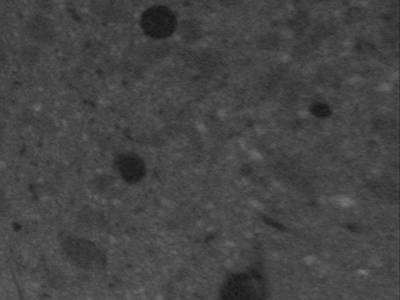

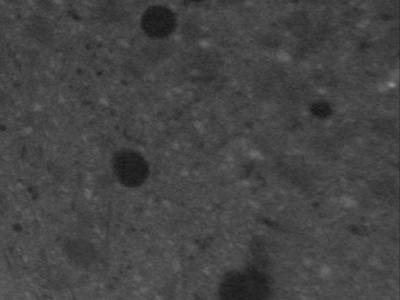





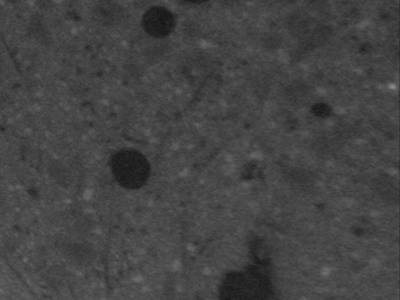

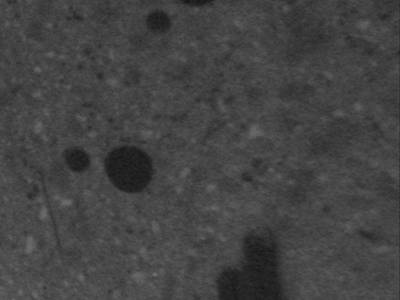



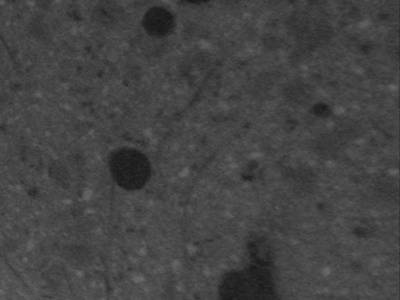

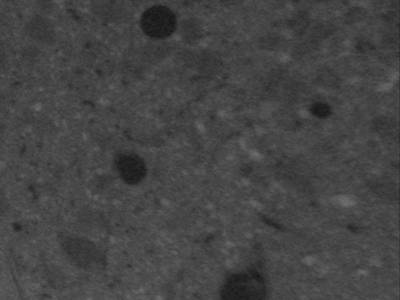

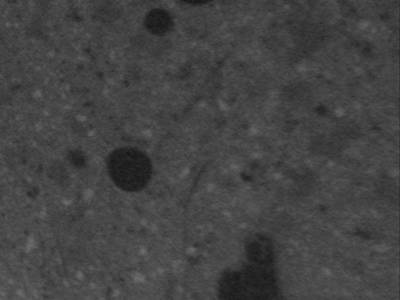




Class balance #
There are 1 annotation classes in the dataset. Find the general statistics and balances for every class in the table below. Click any row to preview images that have labels of the selected class. Sort by column to find the most rare or prevalent classes.
Class ㅤ | Images ㅤ | Objects ㅤ | Count on image average | Area on image average |
|---|---|---|---|---|
polyethylene fiber➔ mask | 9948 | 699597 | 70.33 | 0.64% |
Images #
Explore every single image in the dataset with respect to the number of annotations of each class it has. Click a row to preview selected image. Sort by any column to find anomalies and edge cases. Use horizontal scroll if the table has many columns for a large number of classes in the dataset.
Class sizes #
The table below gives various size properties of objects for every class. Click a row to see the image with annotations of the selected class. Sort columns to find classes with the smallest or largest objects or understand the size differences between classes.
Class | Object count | Avg area | Max area | Min area | Min height | Min height | Max height | Max height | Avg height | Avg height | Min width | Min width | Max width | Max width |
|---|---|---|---|---|---|---|---|---|---|---|---|---|---|---|
polyethylene fiber mask | 699597 | 0.01% | 0.38% | 0% | 1px | 0.16% | 132px | 37.39% | 5.46px | 1.27% | 1px | 0.16% | 120px | 35.94% |
Spatial Heatmap #
The heatmaps below give the spatial distributions of all objects for every class. These visualizations provide insights into the most probable and rare object locations on the image. It helps analyze objects' placements in a dataset.

Objects #
Table contains all 100076 objects. Click a row to preview an image with annotations, and use search or pagination to navigate. Sort columns to find outliers in the dataset.
Object ID ㅤ | Class ㅤ | Image name click row to open | Image size height x width | Height ㅤ | Height ㅤ | Width ㅤ | Width ㅤ | Area ㅤ |
|---|---|---|---|---|---|---|---|---|
1➔ | polyethylene fiber mask | hd_26_slice_06.png | 374 x 374 | 4px | 1.07% | 3px | 0.8% | 0.01% |
2➔ | polyethylene fiber mask | hd_26_slice_06.png | 374 x 374 | 4px | 1.07% | 4px | 1.07% | 0.01% |
3➔ | polyethylene fiber mask | hd_26_slice_06.png | 374 x 374 | 4px | 1.07% | 4px | 1.07% | 0.01% |
4➔ | polyethylene fiber mask | hd_26_slice_06.png | 374 x 374 | 9px | 2.41% | 12px | 3.21% | 0.03% |
5➔ | polyethylene fiber mask | hd_26_slice_06.png | 374 x 374 | 5px | 1.34% | 5px | 1.34% | 0.01% |
6➔ | polyethylene fiber mask | hd_26_slice_06.png | 374 x 374 | 6px | 1.6% | 10px | 2.67% | 0.02% |
7➔ | polyethylene fiber mask | hd_26_slice_06.png | 374 x 374 | 2px | 0.53% | 2px | 0.53% | 0% |
8➔ | polyethylene fiber mask | hd_26_slice_06.png | 374 x 374 | 1px | 0.27% | 1px | 0.27% | 0% |
9➔ | polyethylene fiber mask | hd_26_slice_06.png | 374 x 374 | 2px | 0.53% | 1px | 0.27% | 0% |
10➔ | polyethylene fiber mask | hd_26_slice_06.png | 374 x 374 | 5px | 1.34% | 4px | 1.07% | 0.01% |
License #
License is unknown for the Fiber Segmentation Dataset dataset.
Citation #
If you make use of the Fiber Segmentation data, please cite the following reference:
@dataset{Fiber Segmentation,
author={Franz Wagner and Hans-Gerd Maas},
title={Fiber Segmentation Dataset},
year={2023},
url={https://www.kaggle.com/datasets/franzwagner/pe-fibers}
}
If you are happy with Dataset Ninja and use provided visualizations and tools in your work, please cite us:
@misc{ visualization-tools-for-fiber-segmentation-dataset,
title = { Visualization Tools for Fiber Segmentation Dataset },
type = { Computer Vision Tools },
author = { Dataset Ninja },
howpublished = { \url{ https://datasetninja.com/fiber-segmentation } },
url = { https://datasetninja.com/fiber-segmentation },
journal = { Dataset Ninja },
publisher = { Dataset Ninja },
year = { 2026 },
month = { jan },
note = { visited on 2026-01-21 },
}Download #
Please visit dataset homepage to download the data.
Disclaimer #
Our gal from the legal dep told us we need to post this:
Dataset Ninja provides visualizations and statistics for some datasets that can be found online and can be downloaded by general audience. Dataset Ninja is not a dataset hosting platform and can only be used for informational purposes. The platform does not claim any rights for the original content, including images, videos, annotations and descriptions. Joint publishing is prohibited.
You take full responsibility when you use datasets presented at Dataset Ninja, as well as other information, including visualizations and statistics we provide. You are in charge of compliance with any dataset license and all other permissions. You are required to navigate datasets homepage and make sure that you can use it. In case of any questions, get in touch with us at hello@datasetninja.com.


